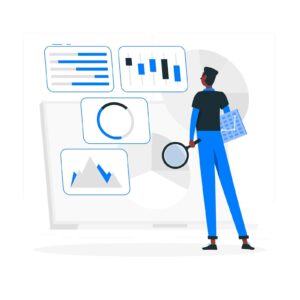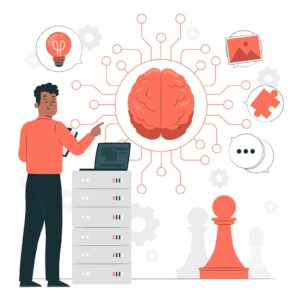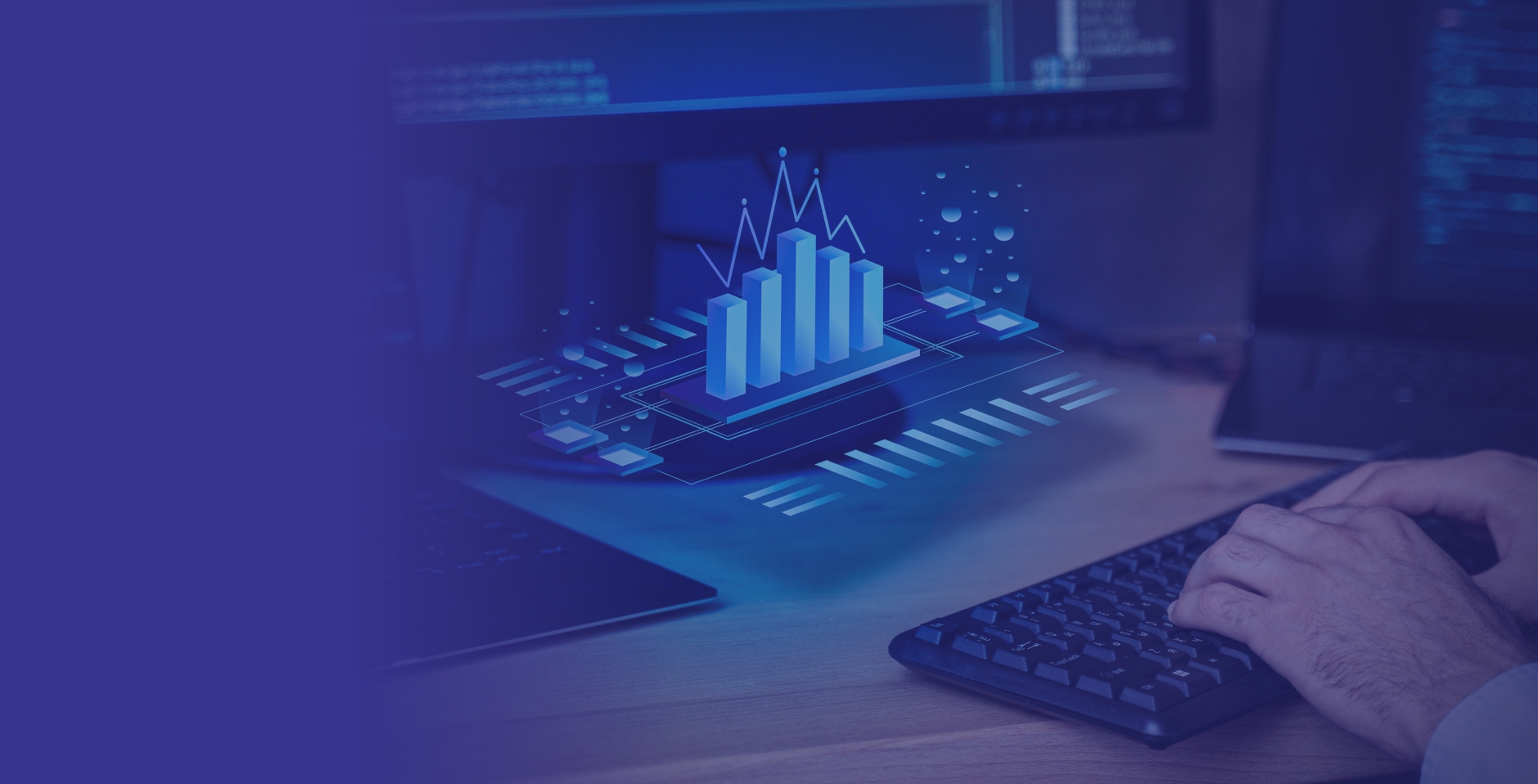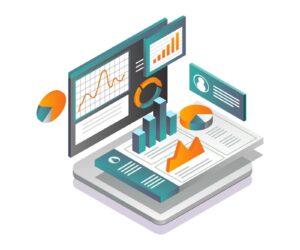How Data Science and Data Analytics With AI are Impacting the Business World?
In today’s world driven by data, where every click and touch over the network of devices is communicating and transmitting information in terms of data, the fields of data science and data analytics have come up as very important derivatives not just to drive insights and decisions across various industries, but with the advancement of technology, especially in the field of artificial intelligence (AI), these sectors of technology have seen and have come up with impressive results, changing the course of how businesses operate and make decisions.
We usually connect data science and data analytics and often use the terms interchangeably as we may understand them, but both terms refer to different aspects of handling and interpreting data. Where data science involves the extraction of insights and knowledge from structured or unstructured data, by using various techniques like statistical analysis, machine learning, and data mining. On the other hand, data analytics focuses more on analyzing the data to discover trends, patterns, and correlations and not extracting judgment directly, but that can aid in the decision-making processes.
Understanding Data Science
Data science, as we know, has come a long way. It uses a wide range of methodologies and techniques, by making connections and decoding the values to extract insights and knowledge from raw data. The process involves collecting, cleaning, and analyzing large datasets to discover hidden patterns and trends. Generally, Data scientists use a set of combination of programming skills, statistical knowledge, Mathematical expressions, and domain expertise specific to the need to derive meaningful insights that can deliver meaningful suggestions on business strategies and decision-making.
Exploring Data Analytics
 Since now we have some idea about what data science is and what it delivers to a business let’s discuss what exactly data analytics does. When looking at data analytics, it basically focuses on numbers or let’s say values! it involves the use of tools and technologies to analyze the values in the data to derive actionable insights. It helps businesses understand the what, why, and how parts of their customer needs, the how to optimize scenario of the operational process, finally leading them in determining and improving the decision-making processes. In the analytics realm, there are various types of data analytics schemas, including but not limited to descriptive, diagnostic, predictive, and prescriptive analytics, each designed to deliver a specific purpose in uncovering insights from data.
Since now we have some idea about what data science is and what it delivers to a business let’s discuss what exactly data analytics does. When looking at data analytics, it basically focuses on numbers or let’s say values! it involves the use of tools and technologies to analyze the values in the data to derive actionable insights. It helps businesses understand the what, why, and how parts of their customer needs, the how to optimize scenario of the operational process, finally leading them in determining and improving the decision-making processes. In the analytics realm, there are various types of data analytics schemas, including but not limited to descriptive, diagnostic, predictive, and prescriptive analytics, each designed to deliver a specific purpose in uncovering insights from data.
The Intersection of Data Science, Data Analytics, and AI
AI is the new trend that plays a pivotal role in elevating data science and data analytics capabilities. Machine Learning, a subset of AI, with its existence, leaps in understanding the raw data. Using its extensive algorithm-based libraries enables data scientists and data analysts to automate the process of uncovering insights from huge datasets. Imagine you manually cleaning a dataset of millions of records, we are sure to make human errors and typos and it would be time-consuming. Here where AI-powered tools and technologies make a huge change in organizing and analyzing this data. It enables them to gain deeper insights and make better decisions
The Role of Data Science and Data Analytics in Businesses
From all that we have discussed till now looking at the above definitions, we have a clear idea of how data science and data analytics play their roles, in helping businesses gain a competitive edge. To start with, by leveraging data-driven insights, organizations have been making informed decisions, optimizing their processes, and identifying new growth opportunities. Also with the help of Artificial Intelligence, they have been improving customer experience to predict market trends. Data science and data analytics have transformative effects across industries worldwide.
Key Components of Data Science and Data Analytics
- Understanding SQL in Data Science
- What is SQL?
- Importance in Data Science
- Applications and Examples
- Python for Data Science and Data Analytics
- Overview of Python
- Python Libraries for Data Analytics
- Examples of Python in Data Science
- Data Analysis with Excel
- Excel in Data Analysis
- Functions and Features
- Practical Examples
- Data Visualization with PowerBI
- Introduction to PowerBI
- Importance of Data Visualization
- Creating Visualizations with PowerBI
- Data Prediction with Machine Learning
- Machine Learning in Data Science
- Predictive Modeling Techniques
- Applications and Examples
Understanding SQL in Data Science
Structured Query Language (SQL) is a programming language that is quite simple and sophisticated and is used to manage and manipulate relational databases meaning it is like asking the system to give us details of a set of data that relates to our query. Every Company in today’s date and time stores its raw data on various clouds or sometimes even on physical servers from where it can be accessed, such storage systems are called databases, In data science, SQL plays a very important role in querying and extracting data from these databases, performing data cleaning and transformation tasks, and conducting data analysis. SQL is a building block for data scientists and analysts to retrieve relevant data for further analysis and interpretation.
Python for Data Science and Data Analytics
An IT Undergrad, Student or professional knows that Python is a very versatile programming language, is not hard to learn, it is similar to speaking with a computer in English, with syntaxes that are easy to write and understand, hence is widely used in data science and data analytics due to its simplicity and extensive defined libraries, which means functions are pre-defined. Learning how to use them and adjust the values to get your desired outcome is likewise simpler.
Python libraries such as NumPy, Pandas, and Matplotlib are commonly used for data manipulation, analysis, and visualization. With its rich ecosystem of libraries and frameworks, Python empowers data scientists and analysts to perform complex data tasks efficiently and quickly.
Data Analysis with Excel
Excel is an age-old yet one of the most powerful tools people have been using for data analysis, it is designed to use a wide range of functions and features for manipulating and analyzing data. Starting with basic calculations to advanced statistical analysis, Excel provides data scientists and analysts with a user-friendly interface for exploring data and generating insights.
With its familiar interface and robust capabilities, Excel remains a popular choice for data analysis in many organizations to date with PowerBI coming up as a successor with more advanced features and visualization capabilities.
Data Visualization with PowerBI
PowerBI is relatively new (12 years) compared to others available previously, is a business analytics tool that Microsoft launched as a successor to Excel, which with its capability to visualize data into understandable graphics, and share the insights from their data. Data in its raw numerical form will give us needed insights but without a definitive relative flare, by which we mean there are no visual cues that show how it affects one relative field to another in real time. But the new Business Intelligence tools such as PowerBI With its intuitive yet easy to understand interface and powerful features, allow data scientists and analysts to create beautiful interactive dashboards and reports with real-time updates taking place in the background, which makes it easier to communicate findings and insights to stakeholders and decision-makers. These are the people who might not have enough time to extrapolate insights just from reports that suggest plain and simple numbers and relate each with another pivotal condition. Here data visualization comes into play and helps in analytics & reporting, helping uncover patterns and trends using Pie charts, data bars, gauges, treemaps and many more visual indicators, that may not be apparent from data in numeric form alone.
Data Prediction with Machine Learning
Till now we have discussed how data science and analytics are intertwined along with their key differences but what brings the two together is machine learning, a subset of artificial intelligence that focuses on developing algorithms since the data one would be dealing with would be huge in numbers, ML can identify patterns and learn from that data and make predictions or decisions.
In data science, machine learning techniques are used to build predictive models or in simpler terms break down the patterns of the cleaned data that can forecast future trends, identify patterns, and make recommendations. From regression and classification to clustering and deep learning, machine learning offers a wide range of techniques for predictive analysis.
What we can conclude from here is that Data science and data analytics are now not just limited to understanding trends and making predictions, they help organizations use the power of data to its full potential to drive innovation and growth. This again means data is the “king” but knowing the science behind how to analyse it is the “Rooks”. SQL, Python, Excel, PowerBI, and machine learning are the “Knights” i.e. tools and technologies that empower the “Bishop” with its cross functionality, i.e. data scientists and analysts to extract “Victory” i.e. insights, visualize data, and make predictions with accuracy and efficiency.
FAQ
1. Difference between data science and data analytics?
Data science involves extracting insights from data using different techniques, while data analytics focuses on analyzing data to uncover patterns and trends
2. Use of data science and data analytics in business?
Data science and data analytics help businesses make information-based decisions, helping to optimize processes and identify new growth opportunities.
3. What are some of the common challenges in data science and data analytics?
Common challenges include ensuring data quality, addressing privacy concerns, and keeping up with new and upcoming technologies.
4. What skills are required to become a good data scientist and data analyst?
Programming, statistical analysis, and domain expertise are some of the important skills needed for success in the field of data science and data analytics.
5. What are some future trends in data science and data analytics?
Future trends include the increasing adoption of artificial intelligence, the rise of explainable AI, and the emphasis on ethical data practices.
6. How is SQL used in data science?
SQL is used in data science to query databases, perform data cleaning and transformation tasks, and conduct data analysis.
7. Examples of Python libraries used in data science?
The most popular Python libraries for data science include NumPy, Pandas, Matplotlib, and Scikit-learn, although there are many more.
8. What is the use of Excel in data analysis?
Excel is a very helpful tool with functions and features designed for data analysis, allowing users to perform calculations, generate charts, and perform basic to professional statistical analysis.
9. How does PowerBI help Data scientists & analysts?
Data visualization with PowerBI helps data scientists and analysts uncover patterns and trends in data, making it easier to communicate insights to stakeholders.
10. How does machine learning contribute to data prediction?
Machine learning techniques enable data scientists to build predictive models that can forecast future trends, identify patterns, and make recommendations based on historical data.







